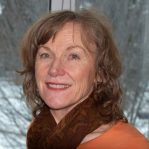When it comes to inclusive education, there are some who are ardent in their belief that each child, regardless of ability, must be included in the classroom at all times. This reflects the political ideology of the Full Inclusion Movement (FIM), which is now mandated by most educational jurisdictions.
But Dr. Kim Calder Stegemann, an expert in inclusivity in the Canadian classroom, cautions that it is not about ‘place,’ but rather about a process where all members of the educational team (including parents) make adjustments, as needed, so that children and youth with learning challenges can be included in meaningful ways.

Dr. Kim Calder Stegemann, associate professor, Faculty of Education and Social Work
Calder Stegemann, lead author of Inclusive Education: Stories of Success and Hope in a Canadian Context, said she was inspired to write the book three years ago while attending a national conference.
“While there I encountered several inclusionists, who were adamant that every child belongs in the classroom regardless of need, but I’ve been a classroom teacher and I know that this is not a reality for some students,” she said. Full inclusion is an issue of social justice, but we must ensure that it offers the best educational opportunity for the child.
“Yes, we need to open the doors to as many students as possible, but we must do so in a way that is best for children of all abilities. Inclusive education is a process, not a place.”
Using the Universal Design for Learning framework, which guides the development of flexible learning environments, Calder Stegemann is an advocate for making schools and classrooms more accessible for everyone, not just children with learning challenges. The Kamloops Thompson School District is unique in that several schools maintain resource or learning assistance rooms. Some schools have “sensory rooms” which provide materials and spaces to meet sensory needs (such as quiet or apparatus for rhythmic movements). But rather than limiting the use of these specialized settings to students with unique learning needs, Calder Stegemann says these spaces can be used by all children, and provide benefit to all regardless of ability.
She hopes that the case studies presented in her book prove useful to pre-service and in-service teachers, providing insight into how inclusion can work, always mindful that “there doesn’t have to be a one-size-fits-all solution.”
“These are real-life examples of children in the classroom and of alternate settings, and how teachers made it the most inclusive and positive experience possible. The parent consultations that took place while writing this book validated the need for educational choice in school districts.
“We’re hearing how these people made it work.”
Listen: Calder Stegemann spoke with CBC on Feb. 20, 2017
More information
Dr. Kim Calder Stegemann
250-371-5736
kcalder@tru.ca

